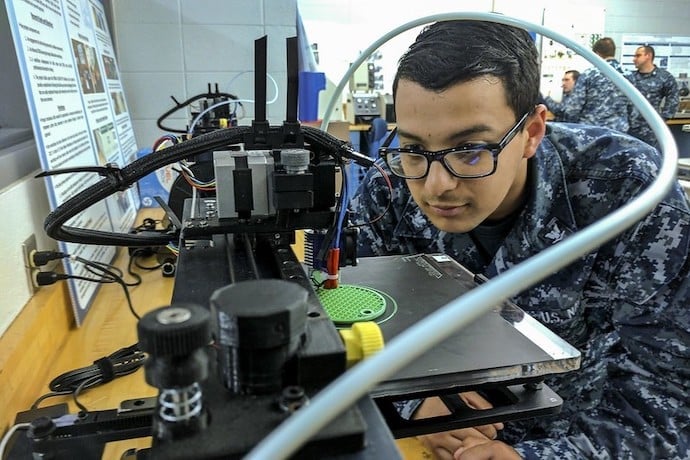When teachers sit down to design a 3D printing lab or makerspace, they imagine the room from all angles. From ventilation to machines to lighting, each space is designed around the eager students that will one day fill it. While these design considerations are the hallmarks of a well-planned workshop, as the space and the curriculum matures, other considerations like methods, long-term projects, and student autonomy begin to play a larger role.
Because Technical Arts are hands-on, creative enterprises, they lean quite heavily on the concept of constructivism. In a design workshop, a student constructs her understanding of 3D printing by the act of, well, 3D printing. In fact, most teachers might agree that this is the most important tenet of making or fabricating. All the instruction and slideshows in the world don’t compare to the benefit of time working independently on passion projects in the lab.
In middle school, however, this can be tricky business. The machines that run in a 3D printing lab can reach temperatures of 250-300 Celsius and certain filaments require proper ventilation and safety considerations. This can make teachers hesitant to give students more autonomy in younger grades. However, the benefit of long-term projects or just general tinkering makes it almost a necessary part of any curriculum.
One solution to this problem that I have been working on in my lab has been a certification course for middle school students. Like a certification course for software or hardware components, the course asks students to study a combination of video, slideshow, and demonstration examples. They can then show their competency through a final test on both the content and their practical use of the machines in the lab.
When I introduced my 3D printing course to my first group of students, I realized a few missteps right away. This group was my most motivated designers and they breezed through the course in a few study hall periods. However, applying what they learned about temperature, bed adhesion, and supports was a litle more difficult. As a result, there were a lot of misprints early on. Knowing when to apply glue stick to the print bed and when to apply hairspray was a challenge. Designing objects that can be printed without supports is also something that my students regularly struggled with.
So, when I went back to the drawing board for my second group of students, I implemented a new model. Students could earn print time by completing certain design and printing challenges. Like the concept of badges, this model gave students clearly chunked goals with rewards at the end. It also provided an opportunity for agency for some of my more motivated designers. They earned print time by assisting other students, fixing filament jams, or keeping the space tidy.
Ultimately, my goal was always to provide an opportunity for student autonomy in my lab. However, the learning curve for me was understanding how best to work with adolescent brains. Their need for independence and competency is strong, but this can sometimes come at the cost of caution and care. A maker lab is a communal place, and it requires a feeling of ownership from students and teachers alike. By giving them small, achievable goals they were able to build both a sense of competency with the printers and a feeling of agency in the space.
Ultimately, my goal as a teacher is to not only help guide students through curriculum and content, but to help them build the cognitive skills they’ll need to thrive post-academia. By working with where middle school students are cognitively, I’ve learned the importance of scaffolding. The process of constructing a set of cognitive skills can sometimes take longer than expected. However, seeing an accomplished maker working diligently in the lab on a passion project makes it all worthwhile.
Learn More
Developing Responsible and Autonomous Learners
https://www.apa.org/education-career/k12/learners
Encouraging Learner Autonomy
https://infocus.eltngl.com/2019/11/21/enouraging-learner-autonomy/
How Learner Autonomy Helps Students
https://www.lambdasolutions.net/blog/how-learner-autonomy-helps-students-become-more-capable-adults
Building Autonomy and Independence in Young Learners
Five Steps to Increase Autonomy in the Classroom
https://blog.teamsatchel.com/5-steps-to-increase-autonomy-in-the-classroom
Supporting Student Autonomy
https://theeducationhub.org.nz/how-to-support-student-autonomy-and-enhance-motivation-2/

